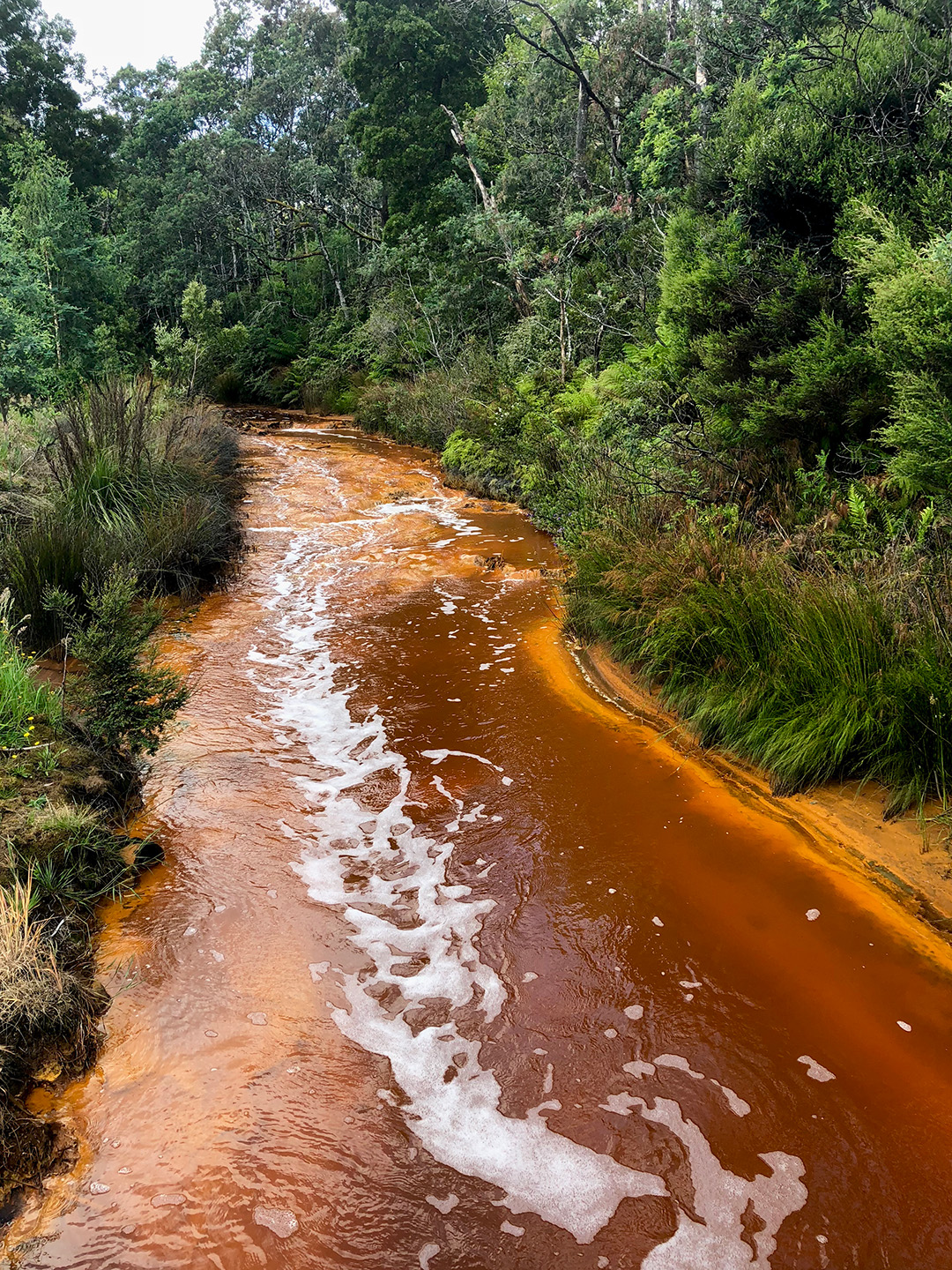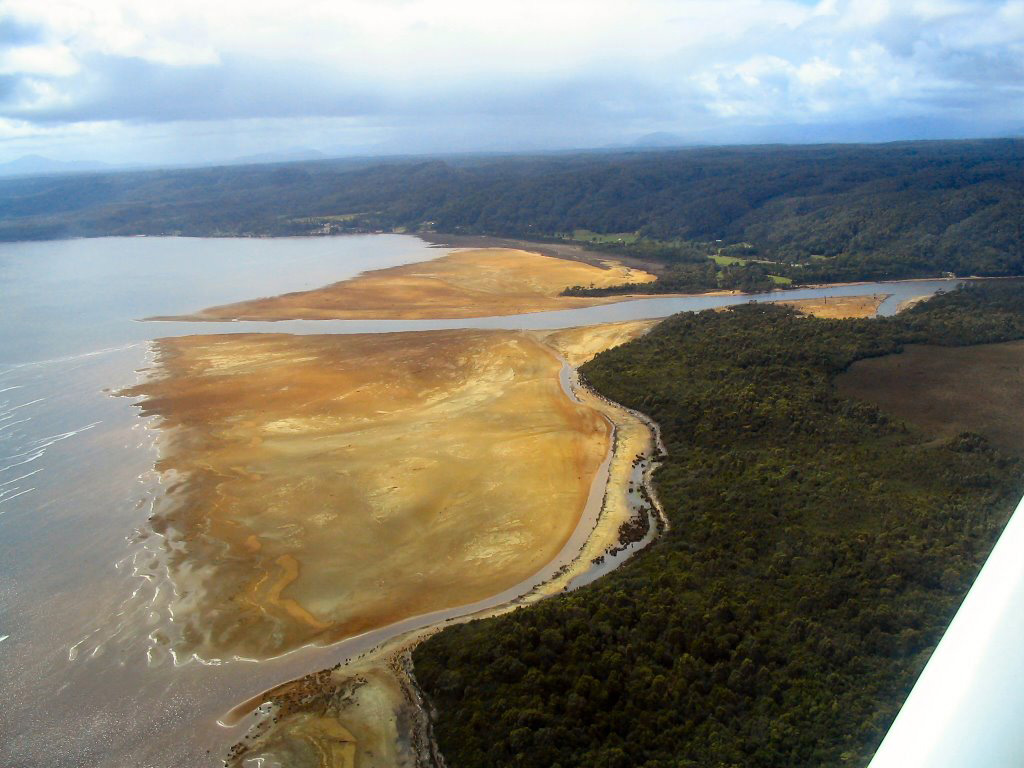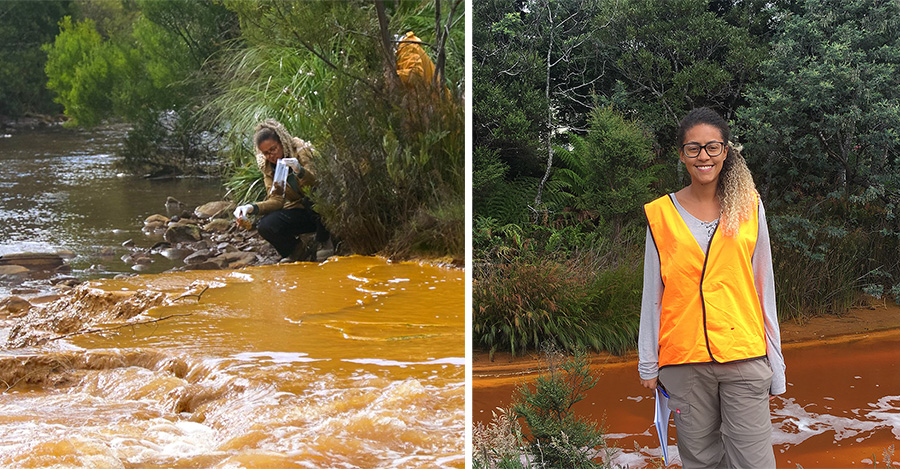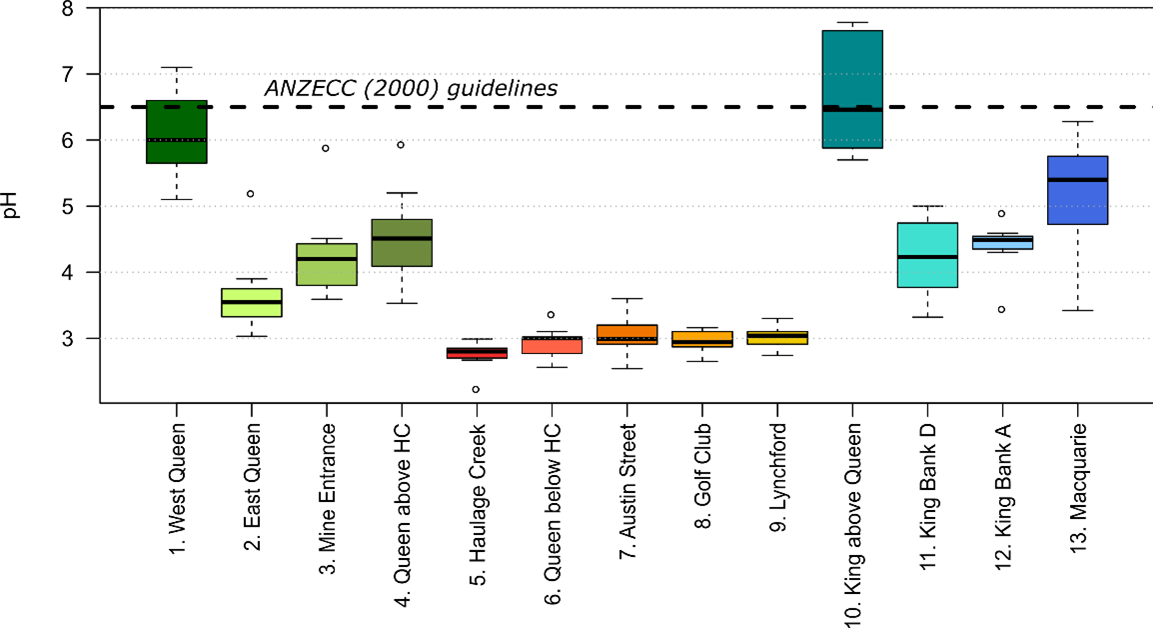Understanding the impact of historical mine waste
This month, I had the pleasure of having my first paper, titled Long-term impact of historical mining on water quality: A case study on Mount Lyell, Western Tasmania, Australia, published by the Mine Water and the Environment journal.
This manuscript investigates the long-term hydrochemical and environmental impacts caused by historical mining activities at Mount Lyell mine, Queenstown, West Tasmania, (Australia). This paper is focused on the Queen – King River system, located in Queenstown Western Tasmania, which is one of the most significant acid mine drainage (AMD) cases in Australia.
From 1916 to 1994 Mount Lyell Copper mine, one of the biggest Cu, Ag and Au productors at the time, disposed of mineral wastes (i.e., large volumes of AMD, smelter slag, waste rock, and pyritic tailings) from their mining operations into Haulage Creek, located at the Queen River.

During operations, the disposal of mine wastes from Mount Lyell into the receiving environment was considered the highest continuous mine-sediment discharge into any river system in Australia. While wastes discharge stopped in 1994, the mine wastes still remain in the overbanks and bottom of the Queen and King Rivers and have accumulated at the King River Delta. For this study, the University of Tasmania (UTAS) has been performing water quality investigation for the past 2 decades, in 13 locations downstream the river (nearly 25Km extension).
This study was part of the UTAS Environmental Geology KEA 348 unit, and sampling was performed by students, lectures, demonstrators and assistants over the past 20 years, who helped collecting and collating this data and contributed tremendously for the elaboration of this manuscript.


Right: Sibele is in one of her field trips to the Queen-King River system. Haulage Creek can be seen at the back.
A little spoiler… At the sample sites below the confluence of Haulage Creek, the water pH is acid (a sneak-peek of these values in the picture below) all the way to Macquarie Harbour, where the tailings are settled in the King River delta.
Dissolved metal(loid)s concentrations such as Al, Co, Cu, Fe and Zn are high in the river streams (how high? Read the paper!), remaining above local guidelines to the harbour. Mineral precipitation are also observed by abundancy of secondary minerals across the river, together with high quantities of pyrite concentrated in the delta. Maybe a potential for reprocessing these material?

I won’t give away too much as I would love people to read the manuscript to understand the impacts that historical mine waste poses to the receiving environment even decades after the disposal ends. This is a great example that tells us that we need to be mindful of how we operate and manage our mining opertions nowadays, and how our decisions can leave a big impact for future generations. On the other hand, it gives a prospective on how wastes can become an option for the critical minerals shortage in the future.
The Long-Term Impact of Historical Mining on Water Quality at Mount Lyell, Western Tasmania, Australia paper is available here: doi.org/10.1007/s10230-023-00943-5 or you can access the PDF version.
